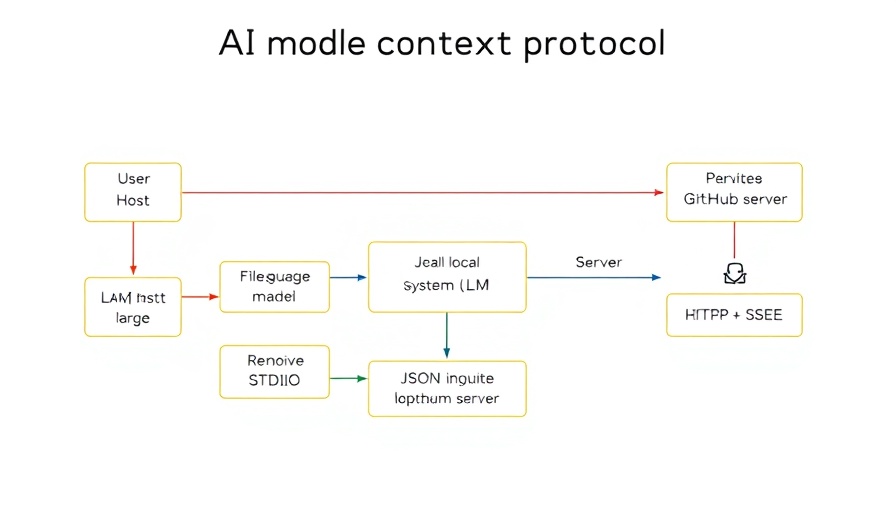
Unlocking AI Potential: The Model Context Protocol (MCP)
In an increasingly technology-driven world, the communication between AI models and their respective tools, data sources, and services is critical. Imagine a future where AI systems can comprehend context and interact without extensive custom coding—the Model Context Protocol (MCP) aims to make this a reality. Often described as a universal translator for AI, MCP provides a framework for smooth intercommunication, significantly diminishing the barriers that previously stifled innovation and collaboration.
Why Do We Need MCP in AI? Understanding Its Strategic Importance
Before the advent of MCP, developers experienced a myriad of frustrations stemming from fragmented integration methods across diverse AI systems. Each project demanded painstaking custom programming for every interaction, which not only wasted time but also reproduced efforts across various teams—a phenomenon commonly characterized as the "reinventing the wheel" scenario. The necessity for interoperability and ease of integration drives the value of MCP, which standardizes the way AI models communicate. With enhanced scalability and streamlined operations as its core benefits, MCP equips developers to pivot towards more strategic innovations rather than labor-intensive plumbing work.
Architectural Features: Components of MCP Unveiled
The architecture of MCP is layered and modular, consisting of three primary components: the Host, Client, and Server. The Host is the AI model performing tasks, the Client acts as an intermediary that formats requests, and the Server provides access to tools and resources. This separation ensures that AI models can effectively tap into remote and local resources without hindrances, thereby optimizing their performance and functional capacity. Notably, the inclusion of a local server is particularly beneficial for private workflows, while remote servers cater to broader operational necessities.
The Building Blocks—MCP Primitives That Simplify Complexity
MCP encapsulates its functionality through specific primitives that serve as foundational elements for communication. These include requests & responses, resources, tools, prompts, and streaming. Each primitive facilitates distinct functions while collectively enhancing the seamless operation of diverse AI models. This level of standardization presents an efficient approach in a landscape often plagued with disparate systems, bridging gaps that previously hindered development.
Looking Forward: The Ethical Implications and Societal Changes with AI
As MCP continues to evolve, it raises significant questions regarding the ethical implications of AI in society. From its integration in education to its potential influence on employment landscapes, the cultural impacts of AI must be continuously examined. The democratization of AI tools through protocols like MCP might simplify access for social good, yet it equally necessitates a keen awareness of potential inequalities and societal challenges associated with job automation and policy changes. This dual-sided nature underlines the importance of ongoing dialogue within the tech community about the implications of AI advancements on our future.
Understanding the Model Context Protocol not only illuminates a path towards integrated AI systems but invites a broader examination of how AI influences societal structures. As we embrace these innovations, we must also remain vigilant in considering their consequences.
 Add Row
Add Row  Add
Add 




Write A Comment